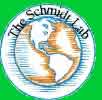|
|
The
alpine tundra of the Colorado Front Range supports a variety of plant communities
whose distribution corresponds to their topographic position. Our objectives
were to: (i) determine patterns in net N mineralization and microbial N
pools among three communities, Kobresia, Acomastylis, and Carex meadows,
that span a topographic gradient, and (ii) relate any patterns to soil microclimate
differences among these communities. Average yearly net N mineralization
rates, measured with an in situ core incubation technique, were 1.2 g N
m-2 in 1991 and 1.0 g N m-2 in 1992. No differences
were detected in yearly N mineralization rates among the three communities;
however, net nitrification and other soil properties were found to differ
among communities. Net N mineralization rates and microbial N showed strong
temporal variation, and this variation was related to different variables
for each community. Seasonal variation in N mineralization was related to
soil water and microbial N in Kobresia meadows, to soil temperature
and microbial N in Acomastylis meadow, and soil water and temperature
in Carex meadows. Seasonal changes in microbial N were related to
soil water in Kobresia and Acomastylis meadows. Large fluctuations
in microbial N indicate that periodic losses from the microbial pool may
be important to N availability in this alpine tundra site. |
|
|







